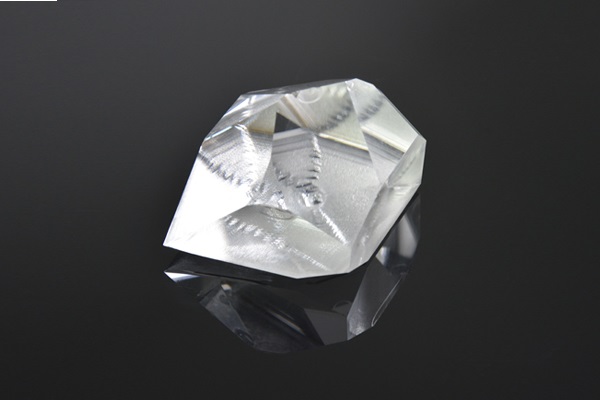Nonlinear Crystals: LBO
Nonlinear Crystals: LBO
Description

LBO (Lithium Triborate) is a nonlinear crystal that is widely used in laser technology for frequency conversion. LBO has a high nonlinear coefficient and a broad transparency range, making it an efficient material for second harmonic generation (SHG), sum frequency generation (SFG), and difference frequency generation (DFG).
In SHG, the frequency of a laser beam is doubled by passing it through an LBO crystal. This process is used to generate light in the ultraviolet range, which is useful in applications such as fluorescence microscopy and laser spectroscopy.
SFG involves combining two laser beams of different wavelengths to create a new beam with a frequency equal to the sum of the input frequencies. LBO is often used as the nonlinear crystal in SFG because of its high efficiency and low absorption. SFG is used in a range of applications, including in Raman spectroscopy and in the production of visible and ultraviolet light.
DFG produces a new frequency that is equal to the difference between two input frequencies. LBO can be used in DFG to generate tunable infrared radiation, which has applications in spectroscopy, sensing, and imaging.
LBO is also used in optical parametric oscillators (OPOs), which are devices that produce coherent light at a new frequency by using an input laser beam and a nonlinear crystal. OPOs using LBO crystals are useful for producing tunable infrared radiation, which has important applications in spectroscopy and imaging.
One advantage of LBO over other nonlinear crystals is its high damage threshold and good thermal conductivity, which make it suitable for high-power laser applications. LBO crystals are also relatively easy to grow, which makes them a cost-effective option for many applications.
| Transparency range, nm | 160 - 2600 |
| Symmetry | ortorombic, point group mm2 |
| Space group | Pna21 |
| Lattice parameters, Å | a = 8.447, b = 7.3798, c = 5.1408 Å, z = 2 |
| Density, g/cm3 | 2.47 |
| Melting point, C° | 834 |
| Mohs hardness | 6 |
| Refractive indexes: | |
| at 1064 nm | nx = 1.5656; ny = 1.5905; nz = 1.6055 |
| at 532 nm | nx = 1.5785; ny = 1.6065; nz = 1.6212 |
| at 355 nm | nx = 1.5973; ny = 1.6286; nz = 1.6444 |
| Non-linear coefficient, pm/V | d31 = 0.67, d32 = 0.85 pm/V |
| Cut off | SHG - 554 nm; THG - 794 nm; SFM-down to 160 nm |
| Walk off | Type I - 0.43°; Type II - 0.22° |
| Non-critical phase matching along X axis | can be achieved for 1064 nm (peaked at 149°C) and for 1080 nm (112°C). |
| Optical damage threshold, MW/cm2 | >10 000 (1064 nm, 20 ns, 50 Hz) |
| Conversion efficiency, % | >70 (1064 nm, 20 ns, 50 Hz, 2 W) |
| 30 (800 nm, 20 ns, 50 Hz, 2 W) | |
| 55 (1064 nm, quasi CW, 2 W) | |
| 50 (1064 nm, 20 ns, 3 W) | |
| Chemical properties | non-hygroscopic |
| Max. size of element, mm3 | 10 x 10 x 20 |
Order Form
About Semiconductor Electronics
SEMI EL project is a global supplier of materials, equipment, spare parts and supplies for the semiconductor industry.
Get In Touch
Email: info@semi-el.com

